|
The MAP News
458th Edition Dec. 22, 2018 |
|
FEATURE During this year-end giving season, we hope you’ll consider a tax-deductible donation to Mangrove Action Project.
 Over the past 26 years the Mangrove Action Project (MAP) has worked around the globe in giving a voice to mangroves, and in helping to conserve and restore these critical forest wetlands. The world today faces a number of challenges – ranging from climate change, to protecting coastlines from strengthening storms, ensuring food security, and economic and social equality. Luckily, mangroves provide unique solutions to these pressing issues! You may have read or heard recently about a report issued by the world’s leading climate scientists at the UN’s International Panel on Climate Change (IPCC), warning us that urgent changes are needed to reverse the course of climate trends. Nearly 2.4 billion people live within 60 miles of the coast, and as temperatures and sea levels continue to rise these areas will be some of the most heavily impacted. Luckily, mangroves have been found to be incredible long-term carbon sinks, storing carbon in the plants themselves, but also (and more importantly) in the soils below for hundreds and sometimes thousands of years. In the coming months, MAP will be pushing our successful ecology and community-based methods to the forefront of mangrove restoration efforts globally, and will continue engaging current and future generations in these crucial ecosystems. But we can only do so thanks to our amazing network of supporters! During this year-end giving season, we hope you’ll consider a tax-deductible donation to Mangrove Action Project. To make a donation, please visit our donations webpage. READ MORE AFRICA Over Half of the World's Tropical Forests Have Been Destroyed  EGYPT - Biodiversity conservationists have revealed that at least 10 more percent of land than what is currently being used to grow green crops will be required to successfully replace fossil fuels with alternatives derived from natural sources such as biofuel. Speaking to government ministers and other high level representatives at the ongoing Biodiversity Conference in Egypt, Anne Larigauderie, executive secretary of the Intergovernmental Platform on Biodiversity and Ecosystem Services (IPBES), said that the increase in the need for land for energy-related uses could undermine natural habitats across the world. Deforestation and forest degradation are one of the biggest threats to forests worldwide and, according to the International Union for Conservation of Nature (IUCN), in the last 60 years, over half of the tropical forests worldwide have been destroyed. Currently, one of the biggest drivers of deforestation is the meat industry with over 2.71 million hectares of tropical forests destroyed to pasture for beef cattle every year. To put it into perspective, this is more than half of tropical deforestation in South America, and more than five times as much as any other commodity in the region. Other significant drivers also include wood products, soybeans, and palm oil. READ MORE African fishing communities face 'extinction' as blue economy grows  KENYA - Fishing communities along Africa’s coastline are at a greater risk of extinction as countries eye oceans for tourism, industrial fishing and exploration revenue to jumpstart their “blue economies,” U.N. experts and activists said on Monday. The continent’s 38 coastal and island states have in recent years moved to tap ocean resources through commercial fishing, marine tourism and sea-bed mining, according to the United Nations Economic Commission for Africa (UNECA). “There is a great risk and a great danger that those communities will be marginalized,” said Joseph Zelasney, a fishery officer at U.N.’s Food and Agriculture Organization (FAO). “The resources that they depend on will be decimated,” he added at a side event at the Blue Economy Conference organized by Kenya, Canada and Japan in Nairobi. The world’s poorest continent hosts a blue economy estimated at $1 trillion but loses $42 billion a year to illegal fishing and logging of mangroves along the coast, according to UNECA estimates. Seismic waves generated by prospectors to search for minerals, oil and gases along the ocean floor have scared away fish stocks, said Dawda Saine of the Confederation of African Artisanal Fishing in Gambia. READ MORE ASIA As tides rise, Indian villagers find a friend in mangroves 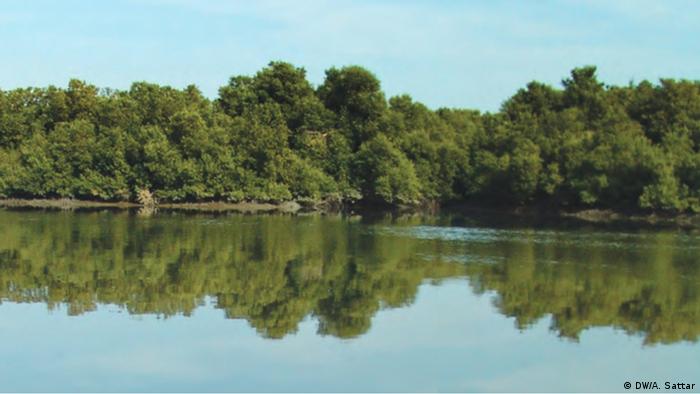 INDIA - Pushpo Mandal still remembers the day, nine years ago, when Cyclone Aila struck and the slender creek at the southern edge of her village swelled into a watery monster. Tall tidal waves broke through the earth embankment, rushing into homes and fields, “gulping down everything that came their way”, recalled Mandal from Patharpara village on the coast of India’s West Bengal state. Patharpara, in the Gosaba block of South 24 Parganas district, near the border with Bangladesh, was among the many Sundarbans villages devastated by the ferocious 2009 storm. Yet while the memory still haunts them, villagers have learned lessons from the destruction – planting mangroves to reinforce the embankments that protect their homes and fields from tidal surges. Similar initiatives are also underway in other parts of India’s coastal states, such as Odisha and Tamil Nadu, as well as in Bangladesh, Thailand, Indonesia and Sri Lanka. READ MORE Mangrove destruction cases doubled in 2018, but no convictions  INDIA - The city recorded 275 cases of mangrove destruction in 2018, almost double of last year’s 138 and 141 cases in 2016, according to a year-end report by the state mangrove cell. While 271 cases were reported on government land in the city, four were in private forests. Mumbai has 6,600 hectares (ha) of mangrove cover, with 6,400 ha in the suburbs and 200 ha in south Mumbai. Of this, close to 4,500 ha is on government-owned land and remaining in private areas. Fifty-eight people– 35 from the western suburbs, 13 from other parts of the city, and 10 from Navi Mumbai – were arrested for violations of Indian Forest Act, 1927, Environment Protection Act, 1986, coastal regulation zone laws and Wildlife Protection Act, 1972. A total of 44 vehicles were seized, and 1,881 shanties destroyed and cleared from mangrove forests. On September 17, a division bench of justice Abhay Oka and justice Riyaz Chagla of the Bombay high court (HC) had ordered the state to launch criminal action against those who destroy mangroves. However, no convictions were reported this year so far. READ MORE Pakistan's dams threaten mangroves and livelihoods 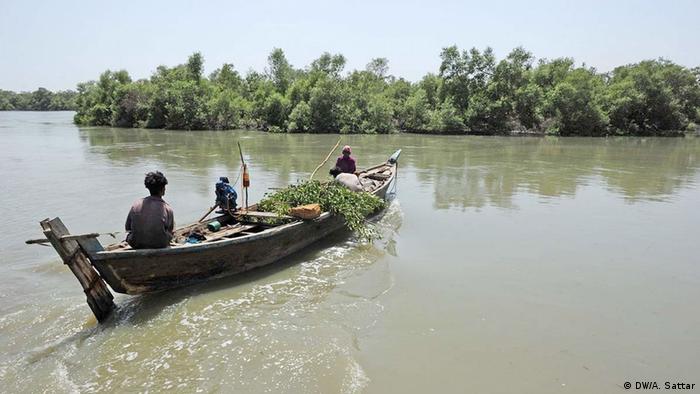 PAKISTAN - Big dams and reservoirs in Pakistan are slowly depleting its lush mangroves. The destruction is also affecting local fishermen, who have to look for alternative sources of income. S. Khan reports from Karachi. Fifty-five-year old Mohammad Yaqoob is dejected. The fisherman lives in Pakistan's southern port city of Karachi and has five children. He has just returned from a fishing expedition with a meagre catch, not even enough to recover the money he spent on the boat and diesel. But things were not always like this. Back in the day, Yaqoob's forefathers managed to catch tons of fish, shrimps and prawns. Now, a drop in the number of fish they can catch is forcing many fishermen in Karachi to give up their traditional profession and look for other means of livelihood. This phenomenon is not confined to the largest city of Pakistan; other parts of Sindh province are also facing a drop in the numbers of fish, shrimp and prawns. Dildar Hussain Mallah, a fisherman from Dadu district, has already decided to keep his children away from fishing. There is not enough water in Indus River now, he tells DW, adding that several areas of the province that used to have plenty of water are dry now. READ MORE Mumbai gets nod to build 10-foot walls to protect mangroves  INDIA - The construction of 10-feet walls along vulnerable and environmentally crucial mangrove forests across the city can now begin after the state mangrove cell received its final clearance. While the Maharashtra Coastal Zone Management Authority (MCZMA) issued clearances earlier this year, the State Environment Impact Assessment Authority (SEIAA) issued its clearance, eliminating the last hurdle before construction. “We cleared the proposal as the Bombay high court (HC) recommended the need for a wall around mangrove areas. Protecting these trees is of utmost importance for a city like Mumbai where flooding concerns have been there since 2005,” said Johny Joseph, chairman, SEIAA. The state mangrove cell said they received the details in a letter earlier this week based on the decision made during the SEIAA meeting last month with a few directions. “Clearances have been issued based on the fact that high-tide water ingress should not be blocked at any cost. We have suggested construction of culverts or under walkways,” said Joseph. The walls have been planned on the landward side across six locations — Sai Dham Nagar in Charkop; near Lagoon Road in Malwani-Malad; along the Eastern Express Highway in Kannamwar Nagar, Vikhroli; Dr Babasaheb Ambedkar Nagar, Colaba; Bhakti Park in Wadala and Shivneri Nagar Mandala, Mankhurd.READ MORE Kerala coast contains ecologically and socio-economically most vulnerable stretches  INDIA - Home to ‘Venice of the East’, the coastal district of Alappuzha in the south Indian state of Kerala, and forested hills in tourist-magnets Idukki and Wayanad, are “very highly vulnerable” to climate change, says a recently released vulnerability index of the flood-battered state. Bringing both environmental and socio-economic factors into the picture, researchers led by the University of Kerala, assessed the local dimensions of vulnerability in the tropical state of Kerala, using a specifically designed composite vulnerability index. Kerala has a very long coastline of 570 km, out of which close to 60 percent is prone to severe sea erosion, points out the Kerala State Action Plan on Climate Change. “The coastal wetlands, lagoons and mangroves, which are unique fragile coastal ecosystems in Kerala, are under the combined threat of projected sea level rise and saltwater intrusion,” S. Sarun, the lead author of the study, told Mongabay-India. “Hence, those districts that have (their) maximum geographical area under these ecosystems have the highest vulnerability,” said Sarun, of the department of geography, University College, University of Kerala.READ MORE AMERICAS Energy watchdog orders halt to work on new refinery after mangroves cleared MEXICO - Mexico’s energy sector watchdog has ordered that preparatory work on the Tabasco site where a new oil refinery is to be built must stop after mangroves were allegedly cleared without environmental authorization. The Agency for Safety, Energy and the Environment (ASEA) directed the company Sistemas Empresariales del Golfo (SEG) to immediately cease all activities that alter the condition of the site, which is located on the Gulf of Mexico coast at Dos Bocas. The Mexican Center for Environmental Law (Cemda) filed complaints last month when both ASEA and the federal Environmental Protection Agency (Profepa) claimed that neither environmental authorization nor permission to change the land use of the site had been granted before work began. The National Commission for the Knowledge and Use of Biodiversity (Conabio) confirmed the presence of mangroves on the site before the preparatory work took place. READ MORE Warmer winters trigger changes in Texas bays 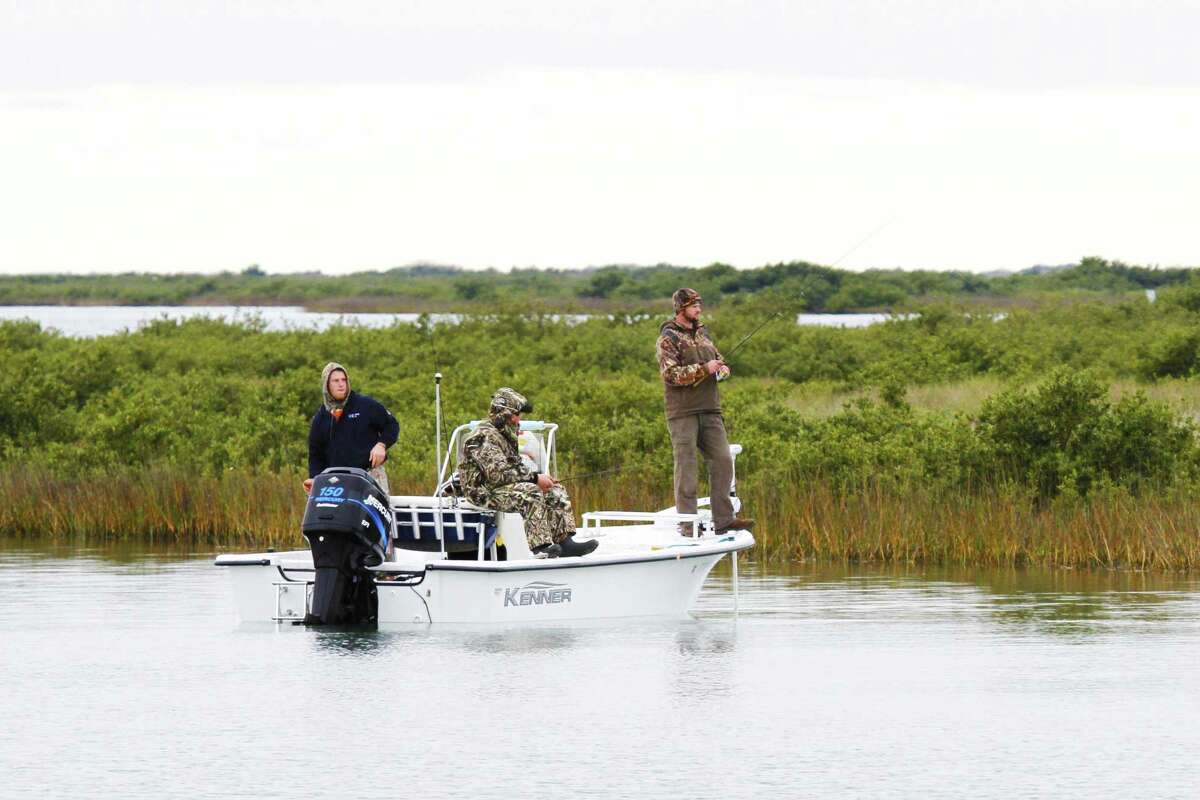 USA - A couple of degrees of temperature and a few inches of water might seem hardly worth noticing. But those slight changes are having and stand to have effects — subtle and significant, understood and still uncertain — on the state’s coastal bays and the estuaries, the marine life tied to them and the people who enjoy those resources. Almost 20,000 acres — 31 square miles — of salt marsh, the oyster grass-dominated matrix of wetlands that is the super-charged engine driving inshore coastal fisheries and providing recreation for more than a million anglers and livelihood for tens of thousands, disappeared from estuaries along Texas’ coast between 1990 and 2010. Over the same 20 years, the amount of black mangrove in the shallows rimming the state’s coastal estuaries grew by approximately 4,000 acres, much of that growth in areas along the upper coast, where the tropical shrub had not been previously documented. In many cases, the expansion of the tropical mangroves has come at the expense of the more productive temperate salt marsh.READ MORE OCEANA Protecting mangroves in South Pacific 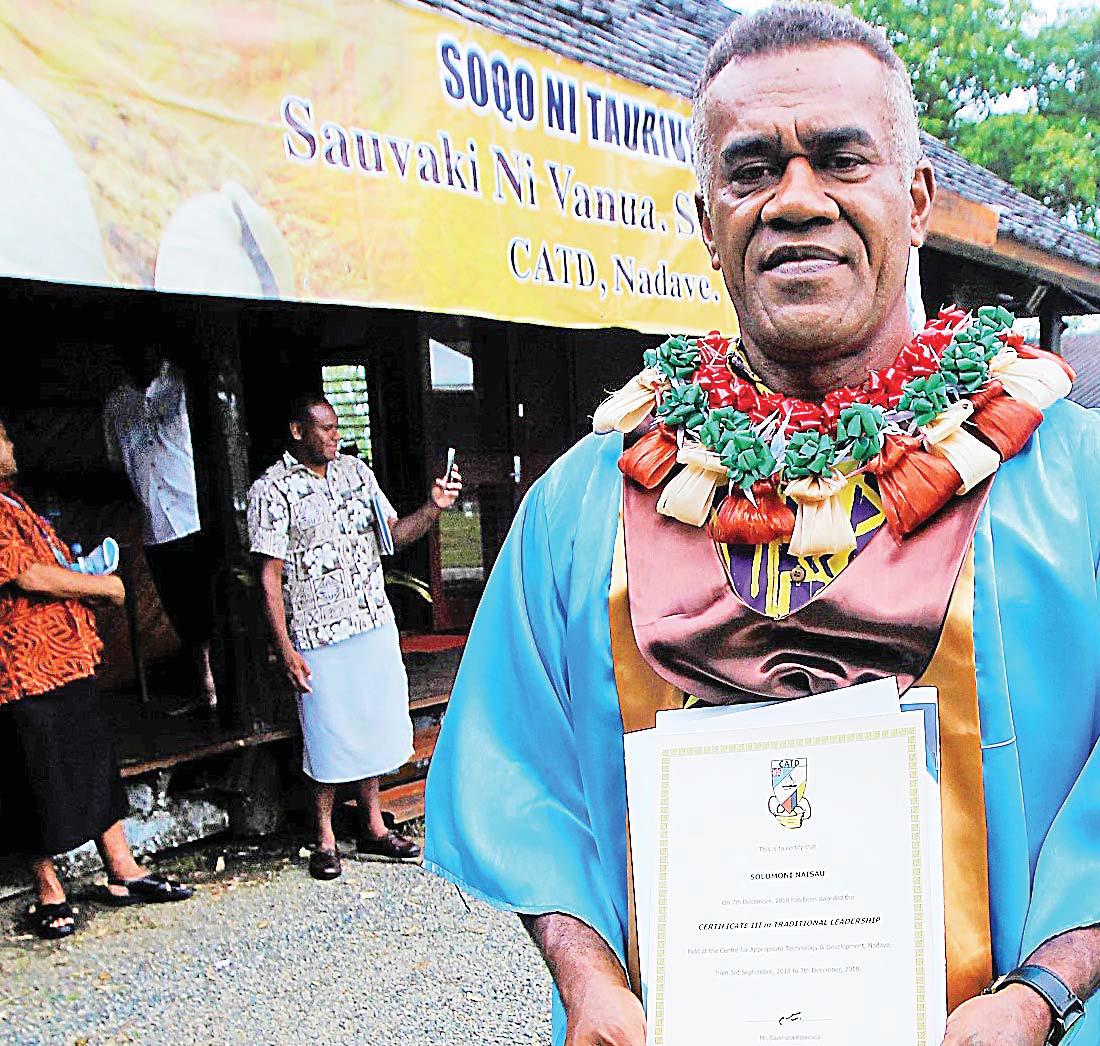 FIJI - Solomoni Naisau grew up not really knowing or fully understanding the importance of our natural ecosystem. He was taught that the natural ecosystem was given to mankind to use to satisfy their basic needs, but he was not fully aware of the importance of the protections of this same natural ecosystem. “As a young boy, I remember when we are told to go and collect firewood, we would just go down and look for mangrove. So we will cut mangrove for our firewood and head back to the village. “We know the importance of mangrove is it provides us with firewood, medicine and also where we can fish,” Mr Naisau. READ MORE |
Video: Mangroves for the Future - A look bacK. As the latest phase of Mangroves for the Future (MFF) draws to a close, this video highlights some of the project’s most successful initiatives – from local women supporting national park management in Viet Nam to an island in the Maldives that has become a model for waste management, and everything in between. View Here Volunteer with MAP - LEARN MORE
|
Mangrove Action ProjectClick here to view past newsletters |
|
Search News Archive
Thursday, December 20, 2018
MAP News Issue 458 - Dec 22, 2018
Saturday, December 8, 2018
From mitigating climate change, to protecting coastlines, food security, bio-diversity, and economic and social equality – mangroves offer important solutions for our planet!
Over the past 26 years the Mangrove Action Project (MAP) has worked around the globe in giving a voice to mangroves, and in helping to conserve and restore these critical forest wetlands. The world today faces a number of challenges – ranging from climate change, to protecting coastlines from strengthening storms, ensuring food security, and economic and social equality. Luckily, mangroves provide unique solutions to these pressing issues!
You may have read or heard recently about a report issued by the world’s leading climate scientists at the UN’s International Panel on Climate Change (IPCC), warning us that urgent changes are needed to reverse the course of climate trends. Nearly 2.4 billion people live within 60 miles of the coast, and as temperatures and sea levels continue to rise these areas will be some of the most heavily impacted.
Luckily, mangroves have been found to be incredible long-term carbon sinks, storing carbon in the plants themselves, but also (and more importantly) in the soils below for hundreds and sometimes thousands of years. Indeed, scientists have discovered that they store far more carbon than first thought – in some cases up to 5 times more per acre than inland forests! – all of which helps significantly in the fight against climate change.
 Given this fact, as well as the numerous other benefits provided by mangroves, it is now even more imperative to conserve and restore our global mangrove forests. To this end, MAP continues leading ecology and community-based mangrove restoration workshops and trainings across Latin America, Asia – and most recently Africa – to ensure that restoration efforts globally are more successful, bringing a brighter future to coastal communities.
Given this fact, as well as the numerous other benefits provided by mangroves, it is now even more imperative to conserve and restore our global mangrove forests. To this end, MAP continues leading ecology and community-based mangrove restoration workshops and trainings across Latin America, Asia – and most recently Africa – to ensure that restoration efforts globally are more successful, bringing a brighter future to coastal communities.And while we are ramping up our efforts at MAP to protect and restore these crucial wetland ecosystems, we are also helping nurture the next generation of coastal forest d
None of this work would be possible without our supporters, and we want to thank you for all your help in ensuring the continued health of our global mangrove ecosystems. The assistance we’ve received from supporters like you over the past year has allowed MAP to:
In the coming months, MAP will be pushing our successful ecology and community-based methods to the forefront of mangrove restoration efforts globally, and will continue engaging current and future generations in these crucial ecosystems. But we can only do so thanks to our amazing network of supporters! During this year-end giving season, we hope you’ll consider a tax-deductible donation to Mangrove Action Project.
To make a donation, please visit our donations webpage, or mail a check to the following address:
P.O. Box 1854
Port Angeles, WA 98362
USA
You can also purchase our 2019 Children's Art Calendar through our website, which makes a great holiday gift!
And as always, from the mangroves and all those who call them home – thank you!
Sincerely,


Alfredo Quarto
- Work with Wetlands International to bring our innovative Community-Based Ecological Mangrove Restoration (CBEMR) method training to Africa, and to expand trainings to additional countries;
- Expand our Marvellous Mangroves program to 2 additional countries (Suriname and French Guyana) – adding to the 250,000 children around the world who have taken part in the curriculum;
- Conduct livelihood trainings in Thailand communities, and strengthen their CBEMR network so that they can expand protection of their country’s mangrove forests.
In the coming months, MAP will be pushing our successful ecology and community-based methods to the forefront of mangrove restoration efforts globally, and will continue engaging current and future generations in these crucial ecosystems. But we can only do so thanks to our amazing network of supporters! During this year-end giving season, we hope you’ll consider a tax-deductible donation to Mangrove Action Project.

To make a donation, please visit our donations webpage, or mail a check to the following address:
P.O. Box 1854
Port Angeles, WA 98362
USA
You can also purchase our 2019 Children's Art Calendar through our website, which makes a great holiday gift!
And as always, from the mangroves and all those who call them home – thank you!
Sincerely,

Alfredo Quarto
Co-Directors,
Mangrove Action Project
PO Box 1854
Port Angeles, WA 98362-0279
Mangrove Action Project
PO Box 1854
Port Angeles, WA 98362-0279
Thursday, December 6, 2018
MAP News Issue 457, Dec. 8, 2018
|
The MAP News
457th Edition Dec. 8, 2018 |
|
FEATURE From mitigating climate change, to protecting coastlines, food security, bio-diversity, and economic and social equality – mangroves offer important solutions for our planet!
 Over the past 26 years the Mangrove Action Project (MAP) has worked around the globe in giving a voice to mangroves, and in helping to conserve and restore these critical forest wetlands. The world today faces a number of challenges – ranging from climate change, to protecting coastlines from strengthening storms, ensuring food security, and economic and social equality. Luckily, mangroves provide unique solutions to these pressing issues! You may have read or heard recently about a report issued by the world’s leading climate scientists at the UN’s International Panel on Climate Change (IPCC), warning us that urgent changes are needed to reverse the course of climate trends. Nearly 2.4 billion people live within 60 miles of the coast, and as temperatures and sea levels continue to rise these areas will be some of the most heavily impacted. Luckily, mangroves have been found to be incredible long-term carbon sinks, storing carbon in the plants themselves, but also (and more importantly) in the soils below for hundreds and sometimes thousands of years. In the coming months, MAP will be pushing our successful ecology and community-based methods to the forefront of mangrove restoration efforts globally, and will continue engaging current and future generations in these crucial ecosystems. But we can only do so thanks to our amazing network of supporters! During this year-end giving season, we hope you’ll consider a tax-deductible donation to Mangrove Action Project. To make a donation, please visit our donations webpage. READ MORE AFRICA Indigenous peoples and local communities are the best guardians of biodiversity EGYPT - “Indigenous peoples and local communities embody humanity’s creative intelligence and wisdom in our care and love for Mother Earth. We are on the frontlines to protect the world's remaining biodiversity, and many of our leaders have been killed defending human rights and the environment.” This was the key closing message of the of the caucus* of indigenous peoples and local communities (IPLCs) participating in the UN Biodiversity conference, held in Sharm El Sheikh, Egypt, 17-29 November 2018. The Biodiversity Conference combined the 14th Meeting of the Conference of the Parties to the Convention on Biological Diversity (COP14), the highest governing body of the Convention, as well as the 9th meeting of the Parties to the Cartagena Protocol on Biosafety (COPMOP9) and the 3rd meeting of the Parties to the Nagoya Protocol on Access and Benefit Sharing (COPMOP3). READ MORE Joining up the dots to protect Forests, Climate and Rights - A Strategy Think-piece CONGO - As 80% of global biodiversity lie within the vast forest territories of indigenous peoples, these crises are closely linked.1 The threats to the successful conservation of forests, the associated impacts on our global climate and the cultural survival of indigenous peoples who call those forests home have their roots in the same problem: a failure to legally recognise and enforce the rights of indigenous peoples to care for their ancestral forest lands, thereby securing their lands and demonstrating sustainability is possible. FPP works at the nexus of these problems mobilising a diverse set of tools to tackle these linked crises. FPP’s approach is rooted in deep working relationships with indigenous peoples, connecting their struggles with national and global allies in the spheres of conservation, human rights, development and trade, and using tools such as strategic litigation, and legal and policy reform to reinforce this grass roots advocacy to generate transformative change. READ MORE ASIA Protecting our mangroves and coastal wetlands 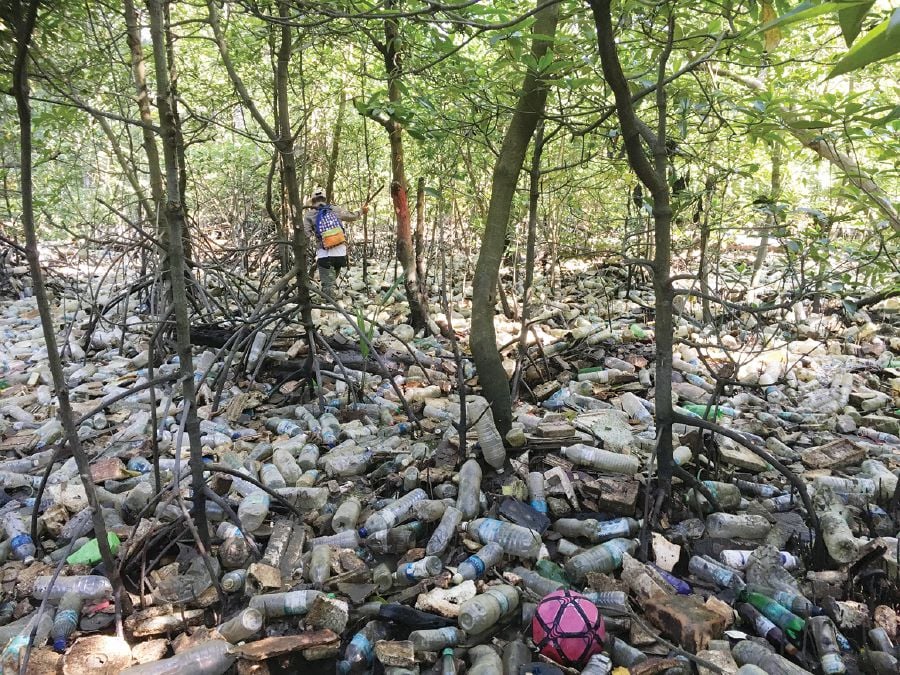 MALAYSIA - During my recent field trips to various mangrove forests and islands on the west coast of Peninsular Malaysia, there were sightings of plastic litter in the mangroves and on the shores throughout the coast. Accumulated plastic litter can have major negative consequences on mangroves. For instance, they occupy ground space and create unnecessary competition — deterring seedlings to establish and grow, while suffocating and choking the faunal organisms. Plastic litter also affect tidal flushing, causing stress on the ecosystem with increased salinity and chemical deposits. Furthermore, plastic litter could also promote the spread of mosquito- and other pest- and water-related diseases, among others.Many mangrove forests are still perceived as the most convenient dumping sites, while some mangrove estuaries are suppressed by the impacts of leachate and overflow garbage from the nearby illegal landfills. It is crucial to note that coastal villages are directly affected by the daily flood and ebb tides. Critically, during spring tides (new moon and full moon), all low lying villages are flooded and the tides will wash away unmanaged litter when ebbing, and contribute further to the marine debris issue. READ MORE After Dedicating 16 Years of His Life to Mangroves, Man Has Helped to Plant 2 Million Trees 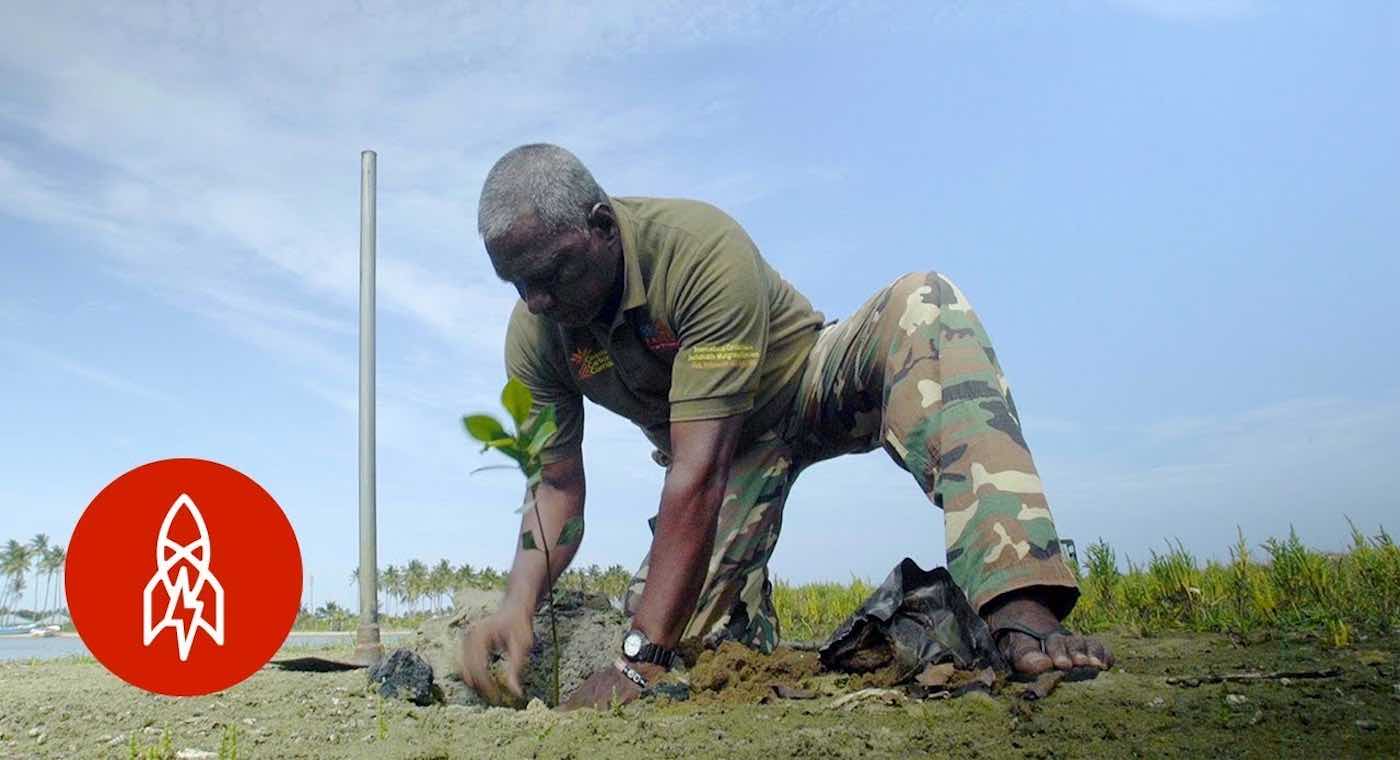 SRI LANKA - Mangrove trees are an essential source of resources for humans and animals alike – and despite how deforestation has put the trees in a precarious position, one man has dedicated his entire life to protecting them. Douglas Thisera, also known as the “Mangrove Master”, has planted over 2 million mangrove saplings across his home country of Sri Lanka in a bid to preserve the precious foliage. “I love mangrove forests very much,” Thisera told Great Big Story. “I can compare my attachment to mangroves like the connection between a tree and its bark.” Though Thisera has been working in conservation since 1992, he has spent the last 16 years planting the saplings and organizing community projects to protect mangrove forests from being torn down for industrialization purposes.READ MORE By 2021, mobile app will send alerts if mangroves destroyed 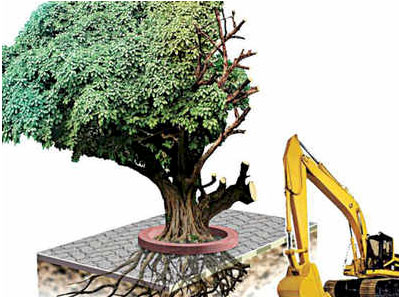 INDIA - Debris mafia and land encroachers may want to think twice before destroying mangroves as the state forest department’s cell is all set to get phone alerts through an app whenever miscreants damage any green cover. The app, to be developed by Indian Institute and Space Science and Technology (IIST)—a unit of Indian Space Research Organisation, will generate alerts even if a minor change is detected in the state’s mangroves cover. Even a 2sqm destruction or degradation of mangroves will be detected with the help of satellites. The IIST commenced work on the satellite-mapping project in April and is expected to complete it by 2021. In the meantime, IIST has already begun sharing satellite images with the mangrove cell. “We are using ground and satellite data to perfect a model for monitoring mangroves. The app, which will be developed in the later stages, will be provided to select officials. It will also receive complaints and mangrove destruction pictures sent by citizens,” said an official. “Past baseline maps and imagery are being used. The satellite will monitor changes and every time a change is detected, if it is negative, an alert will be generated. The project will cost us Rs 70 lakh,” said the official. READ MORE Indigenous peoples in West Papua call for halt of harmful 'development activities' on their customary lands INDONESIA - "Currently, we, the indigenous people, traditional villagers and forest people, and the places where we are living are under pressure and face sustained injustice and social tension due to large-scale “development’ activities conducted by plantation and commercial logging companies." After travelling to Jakarta to meet with religious leaders, and representatives from the environmental and forest ministry, the affected communities from West Papua took part in a demonstration. At present, indigenous communities, villages and customary forests in Papua are experiencing pressure, injustice and social tensions from development activities carried out by large scale plantation companies and commercial logging. READ MORE AMERICAS Experts Seek to Conserve and Restore Mangroves in the Country  COSTA RICA - The International Workshop for Exchange of Experiences in Mangrove Conservation and Restoration was held in the country for the framework of the Project Restoration, Conservation and Sustainable Management of the Mangroves of Costa Rica, Benin Against Climate Change, and the Costa Rica-Benin Mangrove Project. This was the 4th workshop to be held in Costa Rica this year since previously the national experiences have been known and from countries such as Colombia, Panama, and Ecuador. The workshop allowed the exchange of knowledge and experiences related to conservation, mangrove restoration, models of community participation and environmental education related to these ecosystems, which will include the participation of national and international experts, government institutions, civic organizations, and community groups. In addition, it allows the monitoring of the results of the national initiatives previously identified by the project Global Environment Facility (GEF) mangroves and the coordination of the National System of Conservation Areas (SINAC), to work towards the goal of establishing a protocol national for the rehabilitation of mangroves.READ MORE Finding A Future in the Forest  MEXICO -One of the largest remaining tropical rainforests in the Americas stretches across the Mexican states of Yucatan, Quintana Roo and Campeche, and reaches down into Guatemala and Belize. The forests are home to an innumerable number of species, from jaguars and mahogany trees, to plants, insects and animals still yet to be named and classified by modern science. In some places, the landscape is dotted with cenotes, caves hollowed out from limestone, that fill with dazzlingly aqua waters. People living in this region have been stewards of the forest for generations. But when she was younger, Alma Delia Salgado didn’t think she could stay in her small hometown, Nueva Vida, in the state of Campeche. She planned to move away to find work, perhaps to a big city or maybe the United States. This is a common dilemma facing young people around the world, who find few opportunities in rural regions. But for the forest communities of the Yucatan Peninsula, the departure of an entire generation could spell disaster for an ecosystem — and global climate change. READ MORE OCEANA Can Killer Robots Help Save the Great Barrier Reef?  AUSTRALIA - I spot one on a clear September morning, while swimming through the lukewarm waters around the Great Barrier Reef. A striking starfish, the color of cabernet and sporting more than a dozen arms, hugs the side of a gently curving ridge of coral. It looks lovely and dangerous, and not just because I know the long spines covering it are lacquered with venom. This creature, located a two-hour boat ride from Townsville, off Australia’s northeast coast, is known as the crown-of-thorns starfish. While it’s the first one I have ever seen, it’s far from alone. Since 2010, a plague of them, numbering somewhere in the millions, has been methodically consuming the Great Barrier Reef, representing yet another in a series of existential threats to a coral reef system already wounded by intense hurricanes and weakened by bouts of exceptionally warm waters. Nor is this the first outbreak. READ MORE LAST WORD BECCS and many fake “sustainable biofuel” projects continue to misinform about their net impacts using false carbon accounting. Some examples are given in this New York Times article, which unfortunately fails to discuss solutions: Palm Oil Borneo Climate Catastrophe Last year, when the deforested peatlands cleared for oil palm burned in forest fires, Indonesia was briefly the world’s largest CO2 emitter, even more than China or the US! Indonesia has the world’s largest mangroves, and around half of them have been destroyed. Most have been destroyed with international “development” funds, in order to create shrimp ponds, around half of which have been abandoned due to disease. Indonesia now protects mangroves, but the north coast of Java, which used to be mangroves, are now water, causing flooding inland due to sea level rise. If they were regenerated, Indonesia could be the world’s largest and most cost-effective carbon sink. The Biorock method, originally developed for coral reef and coastal fisheries regeneration, greatly increases marine plant above and below ground production, and increases carbon storage in sediments. Willie Smits, Biorock Indonesia, the Mangrove Action Project, and Indonesian mangrove researchers are trying to find funding to use Biorock restoration methods to restore Borneo mangroves that were illegally clearcut for palm oil plantations, whose peat carbon is now oxidizing and turning into CO2 as the result of deforestation and drainage. Our goal is to turn this devastated area into an orangutan sanctuary, a carbon sink, and a producer of truly sustainable biofuels. These will be produced from sustainable tapping of the flower stalks of Nypa fruticans palm, endemic to these swamps, which unlike sugar cane, does not need to be cut down or fertilized to produce biofuels. Thomas J. F. Goreau, PhD President, Global Coral Reef Alliance President, Biorock Technology Inc. Coordinator, Soil Carbon Alliance Coordinator, United Nations Commission on Sustainable Development Small Island Developing States Partnership in New Sustainable Technologies 37 Pleasant Street, Cambridge, MA 02139 goreau@globalcoral.org www.globalcoral.org Skype: tomgoreau Tel: (1) 617-864-4226 |
Video: Mangroves for the Future - A look bacK. As the latest phase of Mangroves for the Future (MFF) draws to a close, this video highlights some of the project’s most successful initiatives – from local women supporting national park management in Viet Nam to an island in the Maldives that has become a model for waste management, and everything in between. View Here ACTION ALERT Making the case for Emergency Climate Change Action
Volunteer with MAP
|
Mangrove Action ProjectClick here to view past newsletters |
|
Subscribe to:
Posts (Atom)
-
The community of adults and youth in Cayman Islands has come together recently to release a series of educational videos. Each is geared to...
-
By Alfredo Quarto, Program & Policy Director Co-founder, MAP There is a rather urgent situation concerning the bio-invasion of the Son...
-
By: Isabel Robinson, MAP Volunteer Intern Some months ago I decided to come to Thailand and do an internship in mangrove conservation, ...
MAP News Issue #596 = April 20, 2024
ENTRIES NOW OPEN! Mangrove Photography Awards 2024 10 Years Celebrating Mangroves GLOBAL - MAP has launched our 10th Mangrove Photograp...

















